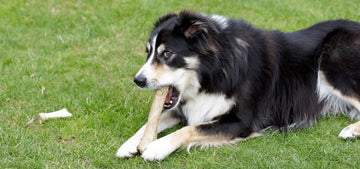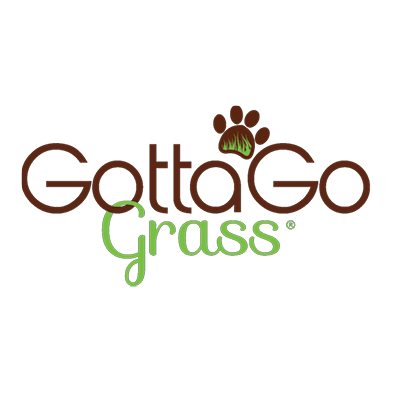
Witnessing a dog with a bone is a beautiful visual of the primal instinct and modern domesticity. Let's explore this captivating relationship and discuss innovations like Gotta Go Grass.

The Ancient Wolf's Diet and Survival Strategies
Before our dogs became part of human families, their ancestors, wolves, were the masters of their wild domains.
- Whole Prey Consumption: Wolves, being apex predators, exhibited a holistic approach to their prey. By consuming nearly the entire animal, they maximized the range of nutrients they ingested. This was not just about sustenance but also about ensuring nothing went to waste in an environment where every kill was crucial.
- Nutritional Powerhouse: The marrow inside bones isn't just a trivial treat; it's a survival food. In harsh winters when prey was scarce, the high-fat content of the marrow could mean the difference between life and death for a wolf. Additionally, the bones, rich in minerals, played a pivotal role in ensuring the health and strength of the pack.
- Nature’s Toothbrush: Dental health in the wild is paramount. A wolf with poor dental health could be less effective in hunting, putting its survival at risk. The abrasive action of gnawing bones helped scrape away food residues and prevent tartar buildup, acting as nature's dental care routine.
- Mental and Physical Stimulation: Dissecting prey and breaking bones provided cognitive challenges. It was a test of skill, patience, and strategy, ensuring wolves remained at the peak of their mental and physical prowess.
The Transition: Wild Wolves to Domestic Dogs
Domestication brought changes, but the bone-chewing instinct persisted:
- Interactive Play: Bones in domestic settings became multifunctional. Beyond being a food source, they served as tools for learning. Puppies would spar over bones, teaching them essential skills about bite inhibition, hierarchy, and social interactions within the pack.
- Teething Aid for Pups: The discomfort of teething is a universal experience in the animal kingdom. For puppies, bones provide the perfect combination of resistance and texture to soothe sore gums, aiding in the proper growth of their teeth.
- Emotional Well-being: Though relieved of survival pressures, domesticated dogs still face anxieties – from separation from owners to unfamiliar sounds. Chewing offers a consistent and familiar activity, acting as an emotional anchor in an ever-changing environment.
Modern Solutions: Embracing Gotta Go Grass

Urban living poses unique challenges:
- Mimicking Nature: The Gotta Go Grass solution offers more than a potty spot; it bridges the gap between the urban and natural worlds. Introducing real grass into homes taps into dogs' instinctual preferences, giving them a slice of the wilderness amidst cityscapes.
- Beyond Odor Management: Synthetic solutions often rely on chemicals for odor control. In contrast, natural grass has a self-neutralizing property, ensuring the indoor environment remains as natural as possible. It's not just about smell; it's about creating a holistic and healthy living space.
- Adaptable and User-friendly: Urban lives are bustling, and convenience is paramount. With its door delivery system, Gotta Go Grass respects the modern-day dog owner's time constraints, ensuring that a hectic lifestyle doesn't overshadow the pet's needs.
The Critical Aspect of Bone Safety
Choosing the right bone is paramount:
Modern-day dog owners have many choices, but not all are safe. Cooked bones, especially poultry ones, can fracture into sharp splinters. It's vital to opt for bones appropriate for a dog's size and chewing style, prioritizing their safety.
Harmonizing Instincts with Today's World
Our responsibilities extend beyond just feeding and sheltering our dogs. It's about understanding their historical context, acknowledging their primal instincts, and ensuring these are harmoniously integrated into today's world. With solutions like Gotta Go Grass and a thoughtful approach to traditional behaviors like bone-chewing, we craft a well-rounded life for our furry friends.




